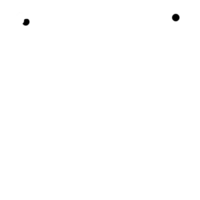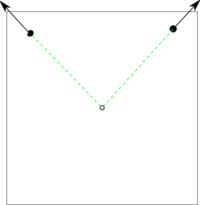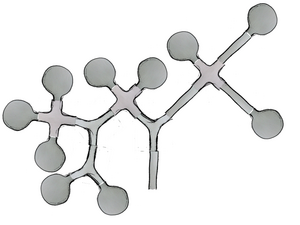This is an old revision of the document!
Problems with L Systems
- Plant shape is entirely defined by algorithm
- Geometric complexity is slow to compute and render
- Somewhat difficult to control in an artistic sense
This is an alternative method where the topology of a plant is still defined by algorithm, but structural shape is defined by the texture images used as components of the plant.
This also allows us to put much more detail in the textures, and build plants out of fewer components.
How it works
Plants are built out of components which are defined by two texture images. The first texture is the one which is rendered on screen. The second is used to define where the connection points are, indicated by black blobs - this is where child components will be connected to. These blobs can be put anywhere in the texture and are automatically located and used by the program.
Each component is only allowed one place where it connects to it's parent, which is always at the bottom of the texture, in the middle.
The angle which the child components are positioned at is calculated by looking at the connection points in comparison to the centre of the image:
This means that the textures have to be drawn with this in mind. We could expand this system to use strokes instead of blobs to represent position and direction at the same time.
A resulting lollypop tree. More work could be done on the joins between the textures, but you get the idea. You can edit the connection points in the textures, and rerun the program to adjust the positions of the components.



